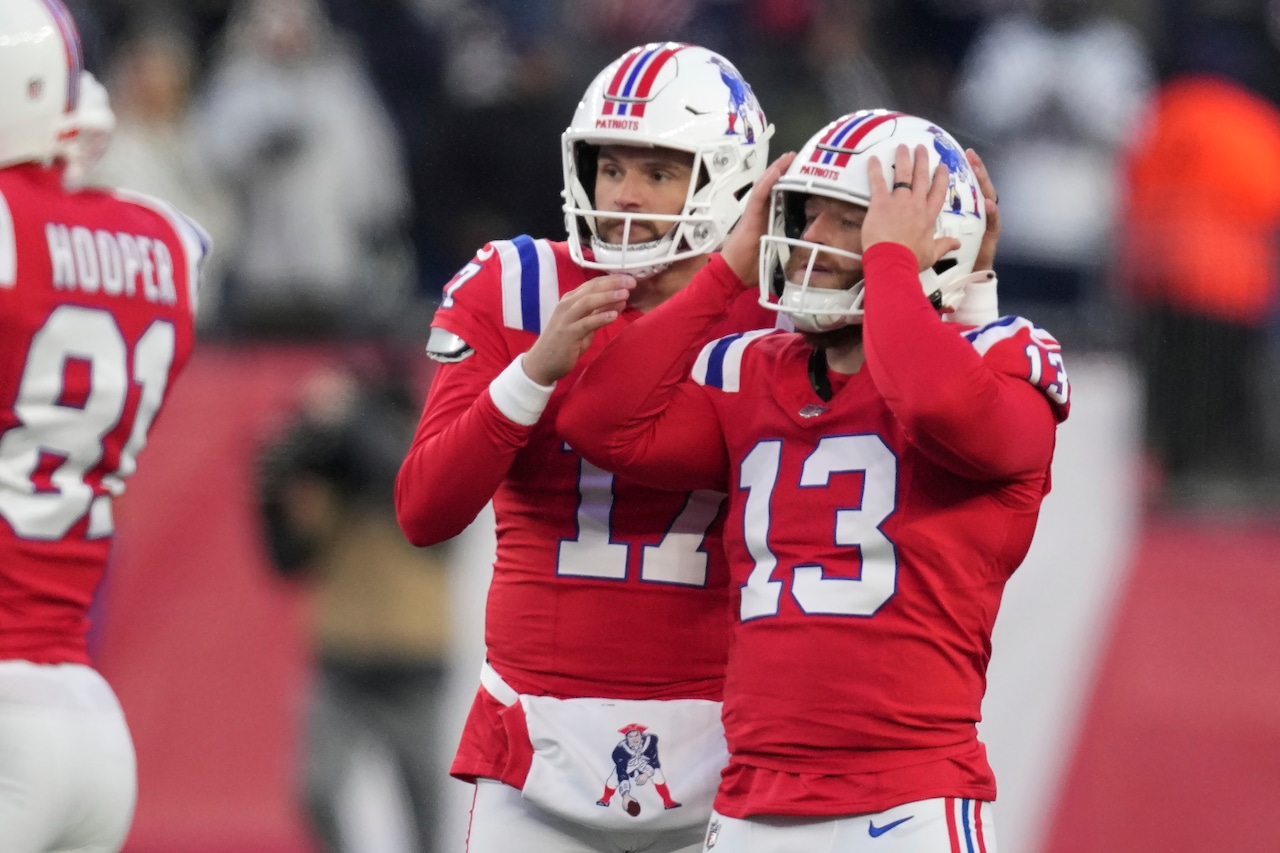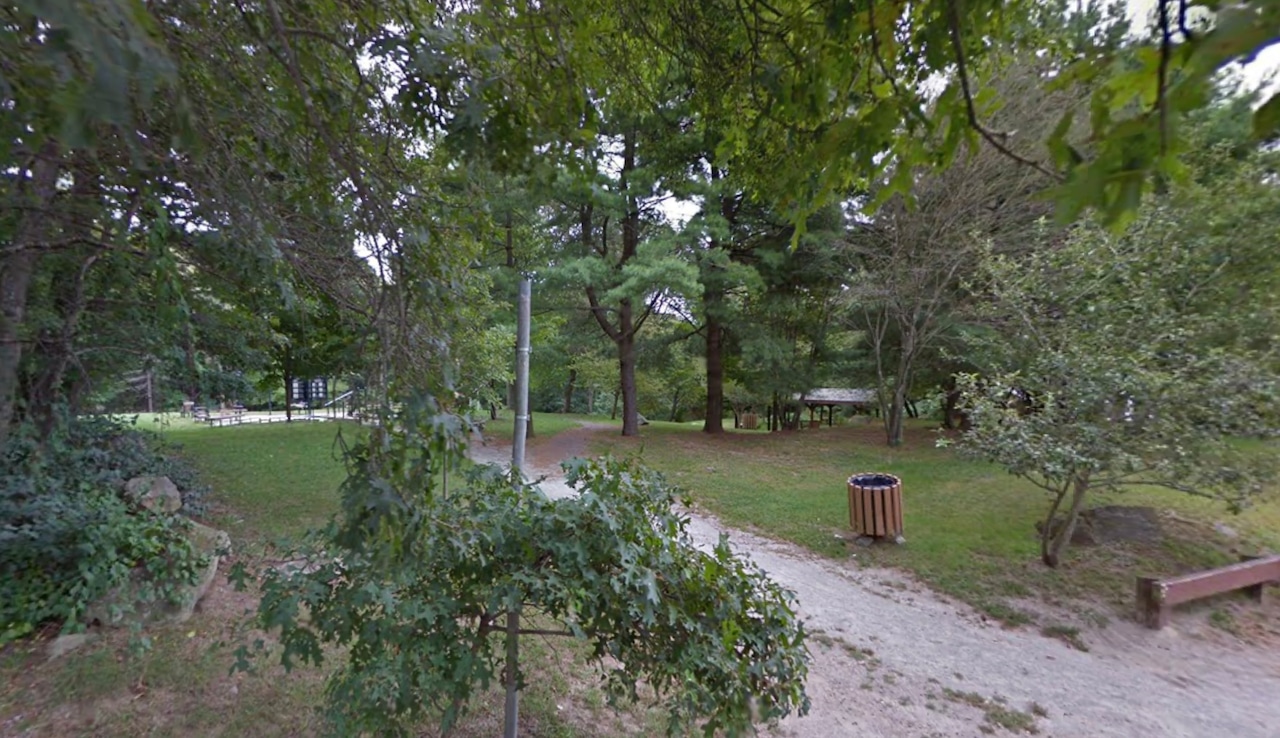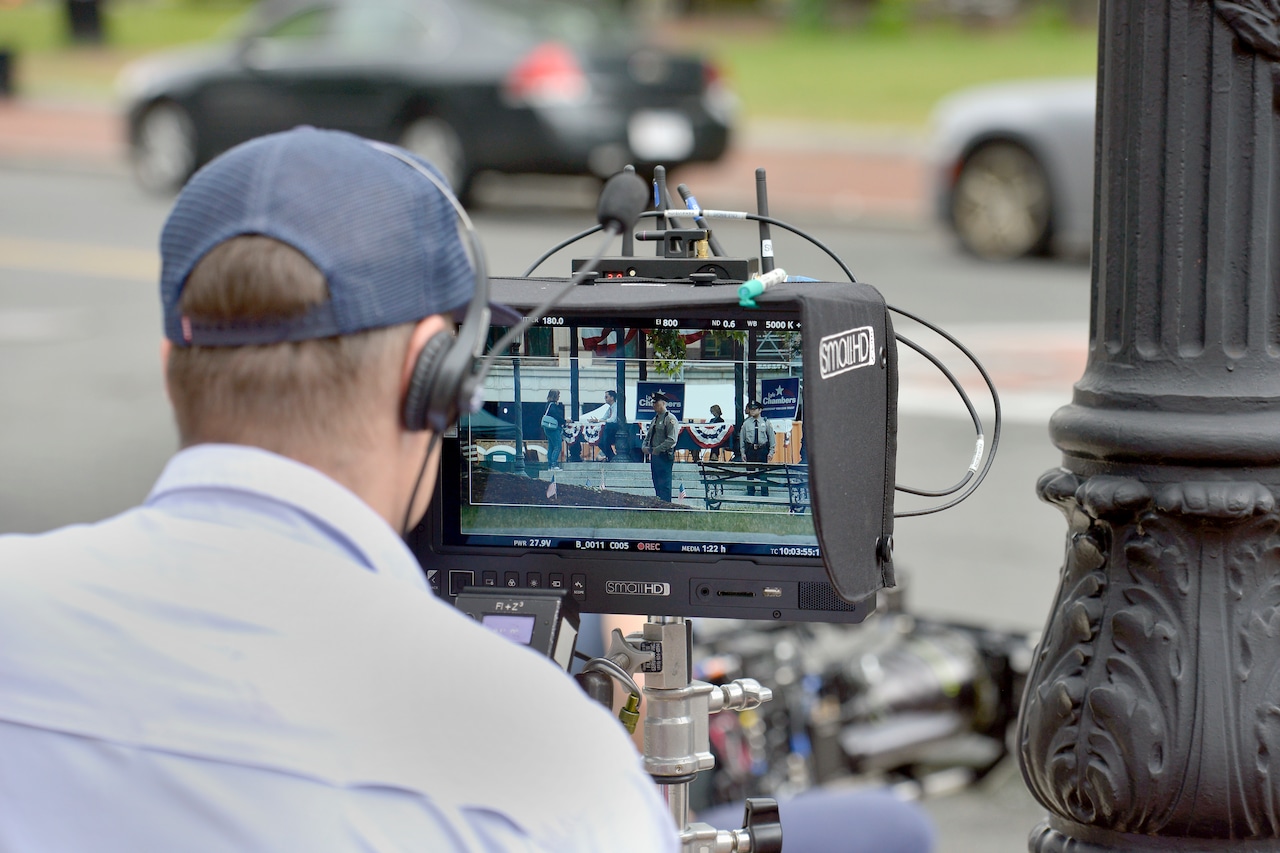
FOXBOROUGH — The Patriots delivered their most entertaining game of the season on Sunday, but ultimately it left them gutted at Gillette Stadium.
Jerod Mayo’s defense collapsed down the stretch, and Joey Slye’s last second 68-yard field goal attempt fell short, as New England dropped a 25-24 thriller to the Colts.
“It was heartbreaking,” Drake Maye said.
Here are five takeaways from an unforgettable afternoon in Foxborough:
- BETTING: Check out our MA sports betting guide, where you can learn basic terminology, definitions and how to read odds for those interested in learning how to bet in Massachusetts.
1. Defense lets them down
Leading 24-17 with 5:34 to play, the Patriots needed a stop from their defense to secure a win.
Instead, Anthony Richardson drove the Colts 80 yards in 19 plays for a score. Indianapolis converted three fourth downs, and when Alec Piece caught a touchdown pass, they’d bled the clock down to just 12 seconds.
Still, the Patriots defense had a chance to erase everything.
Trailing 24-23 after the touchdown, Colts coach Shane Steichen opted to go for two points. Richardson ran right up the gut and delivered a punch to New England’s as he broke the plane.
“Very disappointing,” Jerod Mayo said. “They obviously ran the ball relatively well. We just didn’t make the stops that we need to. Look, that’s the NFL. That’s the NFL. We say it every week. It’s that one play here, that one play there. That extended drive definitely hurt, and then those guys going for two and couldn’t keep them out.”
2. Red zone a killer
The Patriots moved the ball as well as they have all year — their 422 yards of total offense was a season high — but they were still too sloppy once they got inside the 20-yard line. Maye and company went 2-for-6, and settling for field goal tries early ultimately came back to burn them late.
“It was tough down there,” Maye said. “It was tight. Tight windows. Tight throws. I have to give our guys some chances. I think that’s probably the biggest thing. And penalties.”
“That’s really the game,” Mayo said of red zone struggles on both sides of the ball.
3. Cause for optimism
The silver lining here is how well Maye’s offense was humming before the red zone issues.
The Patriots ran for 200 yards thanks to productive afternoons from Rhamondre Stevenson (73 yards), Antonio Gibson (62 yards) and Maye himself (59 yards). In the air, the rookie went 24-of-30 for 238 yards and a touchdown, and his lone interception bounced off Hunter Henry’s hands. The Patriots haven’t moved the ball that well in over two years (447 yards of total offense in Week 3 of 2022).
“I think we got back on track and played a solid football game,” Maye said of the offense. “I still think I left some plays out there. I just hate it myself. I pride myself on trying to lead this team to wins, and we didn’t accomplish that. That’s probably the biggest thing.”
4. Tough day for Slye
Slye’s 68-yard attempt as time expired would have been an NFL record and he struck it well. It’s impossible to hold that against the veteran kicker. But a 25-yard chip shot that he missed earlier in the game certainly hurts when glancing at the final score. Slye wasn’t on the same page as holder Bryce Baringer and bricked a layup.
“I need to be better with my communication on the whole,” Slye said. “To be honest, just kind of a (expletive) situation.”
All told, Slye went 3-for-5 in the loss.
5. Penalties hurt
When the Patriots went in for halftime, Ben Brown was the only offensive lineman that hadn’t been flagged for holding.
Layden Robinson picked up a pair in his first start at left guard, while Demontrey Jacobs, Vederian Lowe, and Mike Onwenu were all flagged, too. At one point, the offense turned a first-and-goal from the 2-yard line into a first-and-goal from the 22-yard line after a pair of holding calls. Pop Douglas also took a touchdown off the board with an illegal shift. They wound up losing 88 yards due to seven accepted penalties.
The Patriots simply don’t have the margin for error to play that foolishly.
“It’s about us,” Mayo said. “Penalties continue to show up, both operational and post-snap, which we’ve got to do a better job of.”






